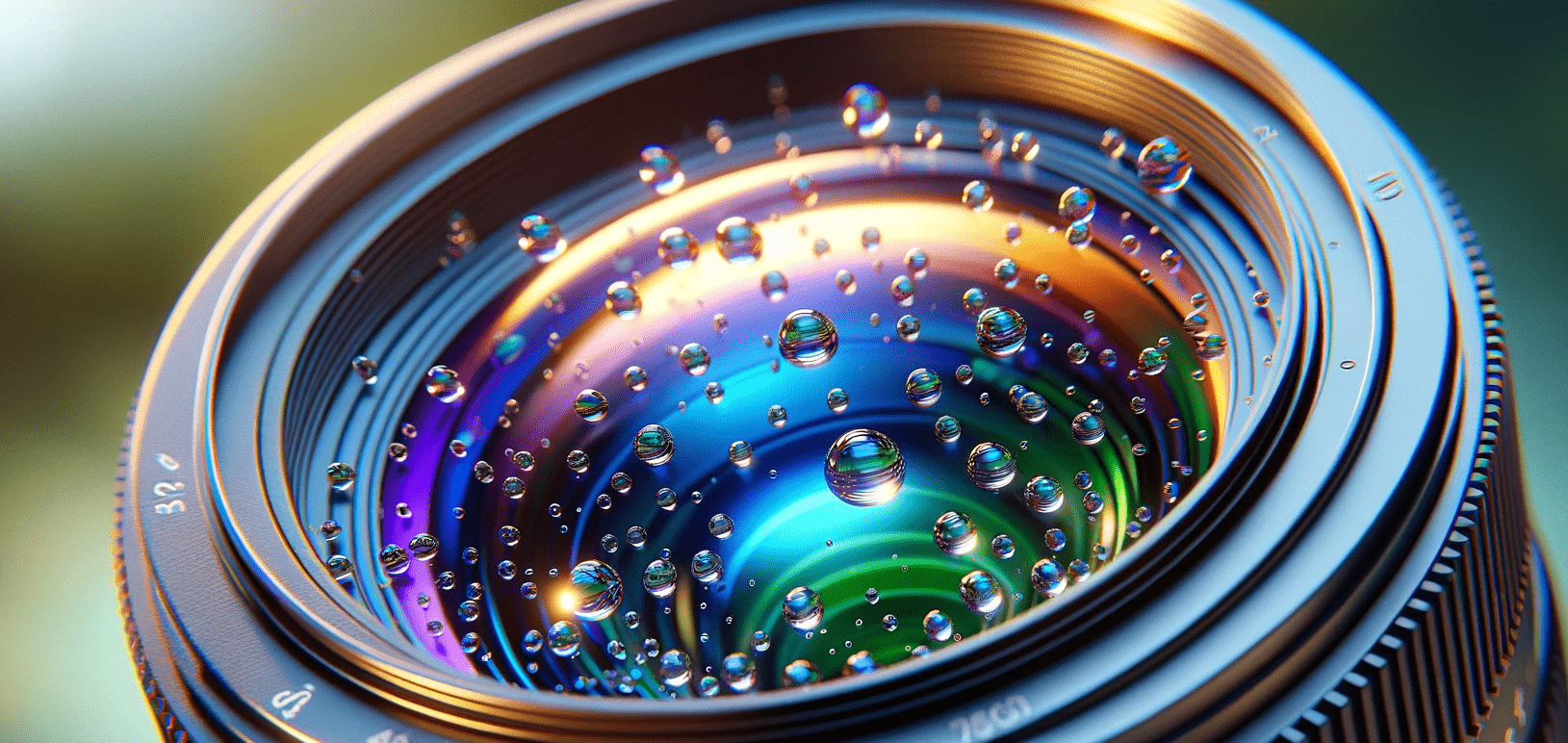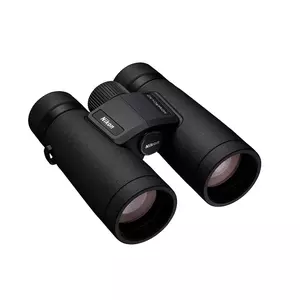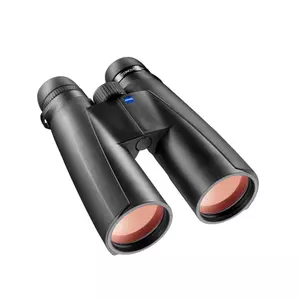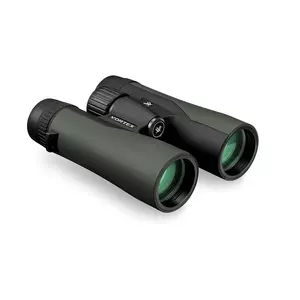Lens Coatings: Enhancing Clarity and Brightness
Binoculars are not just tools, they're windows to a world beyond our immediate reach. From avid birdwatchers to passionate stargazers, the magic of a good pair of binoculars is undeniable. But have you ever wondered what lies behind this magic?
It's not just about the lenses themselves. It's about their coats – the lens coatings that play a pivotal role in the quality and performance of binoculars.
In short: Lens coatings in binoculars are thin layers applied to the lenses to improve image clarity by reducing reflections and increasing light transmission. Different types, like single-coated, fully-coated, and multi-coated, offer varying image quality enhancements.
- The Essence of Lens Coating and Its Significance
- Exploring the Varieties of Lens Coating
- Choosing Between Multi-coated and Fully-coated Lenses
- FAQ about Lens Coating
The Essence of Lens Coating and Its Significance

Imagine lens coating as a secret ingredient in your favorite recipe. It's a thin, almost invisible layer, yet it transforms the entire dish. In binoculars, this coating dramatically enhances the view by minimizing light reflection and maximizing light transmission. This tweak ensures images are bright, full of contrast, and true to color.
Let's dive into a bit of science here. Light, as we know, is electromagnetic radiation, and it behaves differently when it meets different surfaces. At the interface of air and glass, some light reflects back, and some refracts (bends). This behavior hinges on the angle at which light hits the surface and the medium's refractive index (a fancy term for how much a material slows down light).
Every reflection at each lens surface can lead to light loss, affecting the intensity and quality of the image. Additionally, reflections can create undesirable effects like glare and ghosting, which can blur the details of your view. This is where the lens coating comes in, acting like a superpower for your binoculars.
It's crafted from materials like magnesium fluoride or silicon dioxide, which have lower refractive indices than glass. These materials skillfully reduce reflections, allowing more light to pass through, resulting in a clearer, brighter, and more vibrant image.
Exploring the Varieties of Lens Coating

Lens coatings come in various types, each offering different levels of performance:
Single-coated: The entry-level option. Here, a single layer of anti-reflective material is applied to at least one lens surface. It's a basic improvement, reducing reflection by about 1.5% per surface. These are typically found in more budget-friendly binoculars.
Fully-coated: A step up, this involves applying anti-reflective material to all air-to-glass surfaces. It's a significant upgrade, with reflection reduction of about 2.5% per surface and a 25% boost in light transmission. Binoculars with this coating are usually mid-range in terms of both price and performance.
Multi-coated: The cream of the crop. Here, multiple layers of coating are applied, potentially to all lens surfaces. This premium option can reduce reflection by up to 5% per surface and enhance light transmission by as much as 50%.
If you're seeking top-notch image quality, multi-coated lenses are where it's at, typically found in high-end models. By the way, if you are looking for interesting binocular models, here are our top 4 best binoculars in 2025:
- High-End Performance at Affordable Price
- Ideal for Hunting, Birding, and Wildlife Viewing
- Enhanced Low-Light Performance
- Tack-Sharp Edge-to-Edge Vision with Deep Field
- Compact and Lightweight with Improved Light Transmission
- ED Glass Lenses Minimize Distortion
- Ideal for Birding and Wildlife Observation
- Rubber-Armored, Non-Slip Grip Design
- Waterproof and Fog-Proof for Reliable Performance
- Turn-and-Slide Rubber Eyecups for Eyeglass Compatibility
- HD Lens System for Vivid Imaging
- Best for Birdwatching and Nature Observation
- LotuTec Coatings for Scratch Protection
- Conveniently Placed Focusing Wheel for Easy Use
- Perfect for Stalking Game and Rough Terrain
- Exceptional Clarity and Color Fidelity
- Resistant to Water and Fog
- Eyecups Adjustable for Eyeglass Wearers
- Secure, Non-Slip Rubber Armor
- Includes GlassPak Harness for Easy Carrying
Choosing Between Multi-coated and Fully-coated Lenses
When deciding between multi-coated and fully-coated lenses, consider your needs, preferences, and budget. Multi-coated lenses, while pricier, offer numerous advantages:
Brighter, Sharper Images: Especially noticeable in low-light conditions.
Enhanced Contrast and Color Fidelity: For more lifelike and vivid visuals.
Reduced Glare and Ghosting: Ensuring a clearer and more comfortable viewing experience.
Increased Durability: Thanks to better protection against scratches and damage.
However, they're also more expensive and can be more challenging to maintain due to their sensitivity to dirt and dust. On the other hand, fully-coated lenses are more budget-friendly and still provide respectable image quality and light transmission, making them a solid choice for occasional users or those with tighter budgets.
Here's a table outlining the pros and cons of Multi-coated and Fully-coated lenses in binoculars:
| Aspect | Multi-coated Lenses | Fully-coated Lenses |
|---|---|---|
| Image Quality | - Superior image clarity and brightness. - Enhanced contrast and color fidelity. |
- Decent image quality, but not as sharp or bright as multi-coated. - Adequate contrast and color fidelity, but less vivid. |
| Light Transmission | - Higher light transmission (up to 50%), ideal for low-light conditions. | - Moderate light transmission (about 25%), not optimal in low light. |
| Glare and Ghosting Reduction | - Excellent reduction of glare and ghosting, providing clearer views. | - Some reduction, but not as effective as multi-coated lenses. |
| Durability | - Often comes with additional coatings for scratch resistance. | - Less durable compared to multi-coated lenses. |
| Cost | - Generally more expensive due to complex manufacturing. | - More affordable, a budget-friendly option. |
| Manufacturing Complexity | - More complex to produce, leading to higher costs and potential for defects. | - Simpler to manufacture, resulting in wider availability. |
| Maintenance | - Can be more sensitive to dirt and dust, requiring careful cleaning. | - Easier to maintain due to simpler coating. |
| Availability | - Found in higher-end, professional-grade binoculars. | - Common in mid-range binoculars. |
| Suitability | - Ideal for serious enthusiasts and professionals requiring top-quality visuals. | - Suitable for casual users or those with a limited budget. |
FAQ about Lens Coating
What are the benefits of lens coatings in binoculars?
Lens coatings in binoculars have several benefits, such as:
- They increase the amount of light that reaches the eye, resulting in a brighter and clearer image;
- They reduce the amount of light that is reflected off the lens surfaces, resulting in a higher contrast and less ghosting;
- They enhance the color fidelity and resolution of the image, resulting in a more natural and detailed view;
- They protect the lenses from scratches, dust, and moisture, resulting in a longer lifespan.
How can I tell if my binoculars have lens coatings?
One way to tell if your binoculars have lens coatings is to look at the color of the lenses. If the lenses have a bluish, greenish, or purplish tint, they are likely coated. If the lenses have a clear or white tint, they are likely uncoated.
Another way to tell is to look at the reflection of a bright light source on the lenses. If the reflection is dim and colored, the lenses are coated. If the reflection is bright and white, the lenses are uncoated.
How can I care for my binoculars with lens coatings?
To care for your binoculars with lens coatings, you should follow these steps:
- Avoid touching the lenses with your fingers, as this can leave fingerprints and smudges that can affect the coating;
- Use a soft brush or a blower to remove any dust or debris from the lenses, as this can scratch the coating;
- Use a microfiber cloth or a lens tissue to gently wipe the lenses, using a circular motion from the center to the edge. Do not use paper towels, tissues, or clothing, as these can damage the coating;
- Use a mild lens cleaner or distilled water to moisten the cloth or tissue, if needed. Do not use alcohol, acetone, or other solvents, as these can dissolve the coating;
- Store your binoculars in a dry and cool place, away from direct sunlight, heat, and humidity, as these can affect the coating.
Wrapping It Up

The world of binoculars is fascinating, and lens coatings are a big part of what makes viewing through them so special. Whether you opt for multi-coated or fully-coated lenses, understanding these coatings' impact can help you choose the best pair for your adventures.
Remember, a good lens coating not only enhances your immediate viewing experience but also contributes to the longevity and durability of your binoculars. So, the next time you peer through a pair, think about the unseen hero – the lens coating – that's working hard to bring you the best view possible.
You may also like:




